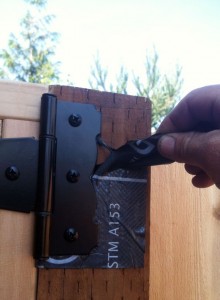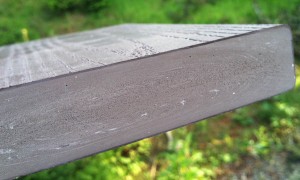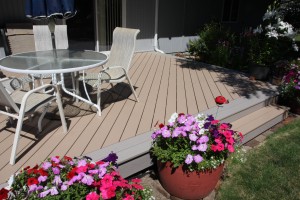Composite decking prices: Trex, Timbertech and Fiberon compete with wood.
Composite decking prices have exciting new options for 2013. Manufacturers have come out with new price-point products that are highly competitive with wood for initial installation cost. Even when the short term costs of staining and maintenance are considered, the net expense of price point composite decking is far lower than real wood. This cost difference will only continue to compound for the life of your deck. The great thing about this seasons offerings is that they all are the new co-extruded type of composite decking, a wonderful benefit because of scratch, stain and fade resistance. Read more about co-extruded decking here. Previous years price point offerings of composite decking, were all of the traditional composite construction, not co-extruded decking.
Some examples of value priced composite decking.
Trex got the ball rolling with new composite decking prices on co-extruded decking, with their new line of “Select” decking, which is now offered in all of the old “Accents” colors, Winchester Grey, Saddle, Woodland Brown, and Madeira. This decking is on the market in the $2.50 range per lineal foot, or $40 per 16′ length. Timbertech added a similarly priced version of their “Earthwoods Evoluntions” product in the “Terrain” line, colors “Brown Oak” and “Silver Maple”, also in the the $2.50 range, per lineal foot. Fiberon’s new Pro-Tect line of composite decking, which is modeled after the appearance of exotic hardwoods, is available for under $3 a lineal foot. The Pro-Tect line includes “Chestnut”, “Gray Birch”, and “Western Cedar”. Pro-Tect also offers two solid colors, “Canyon Brown” and “Harbor Gray” which are available for about $2.40 per lineal foot. We are currently building a Protect deck stay tuned for a portfolio post.
Value conscious homeowners would be wise to take advantage of the new composite decking prices! Give MBA Deck & Fence a call today for a free estimate.



